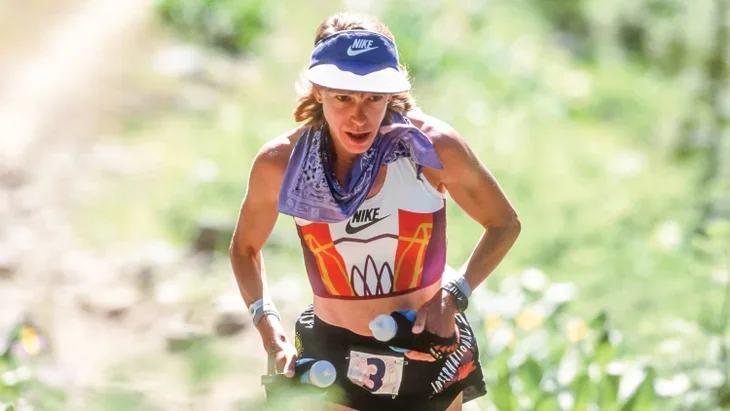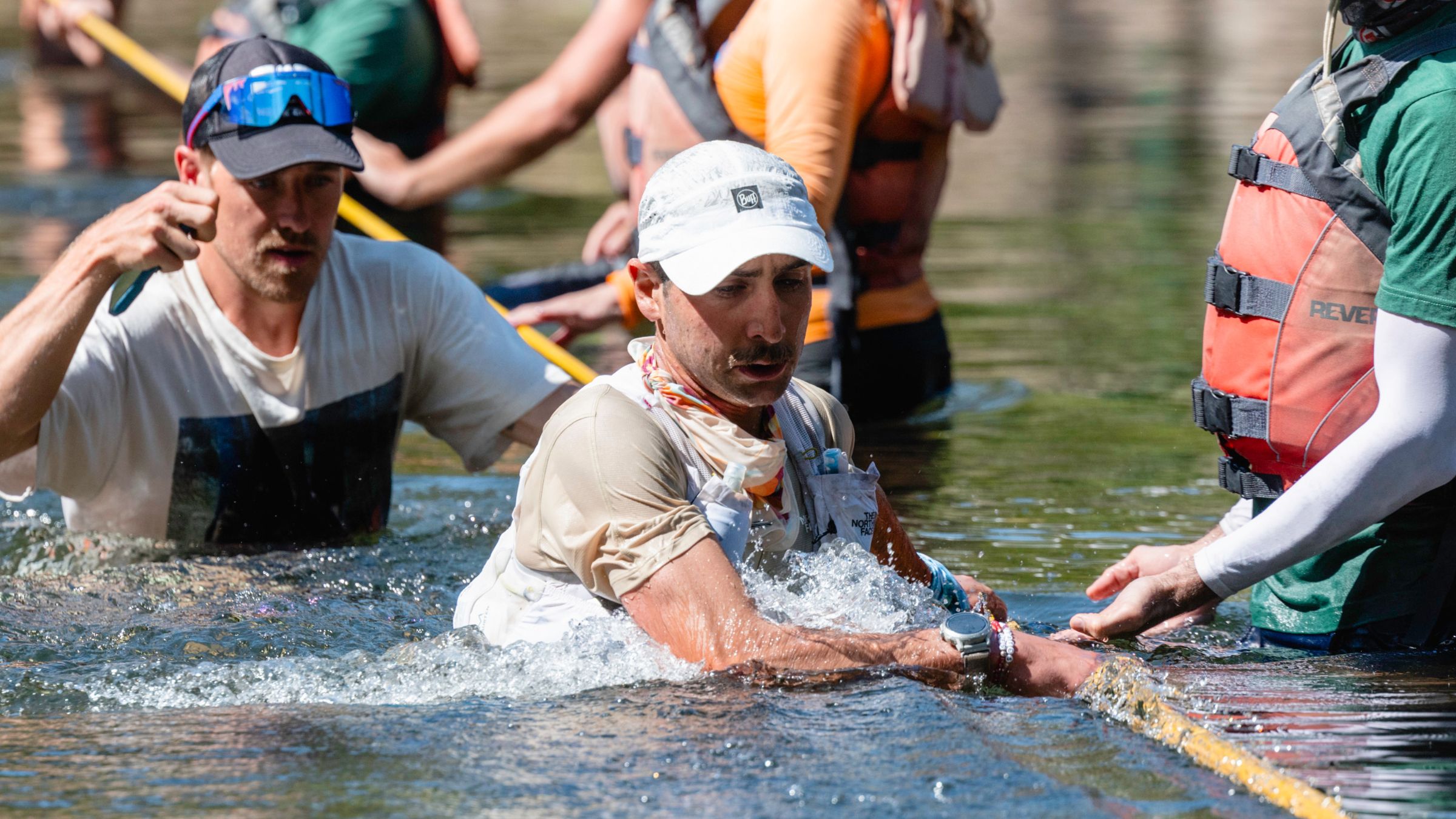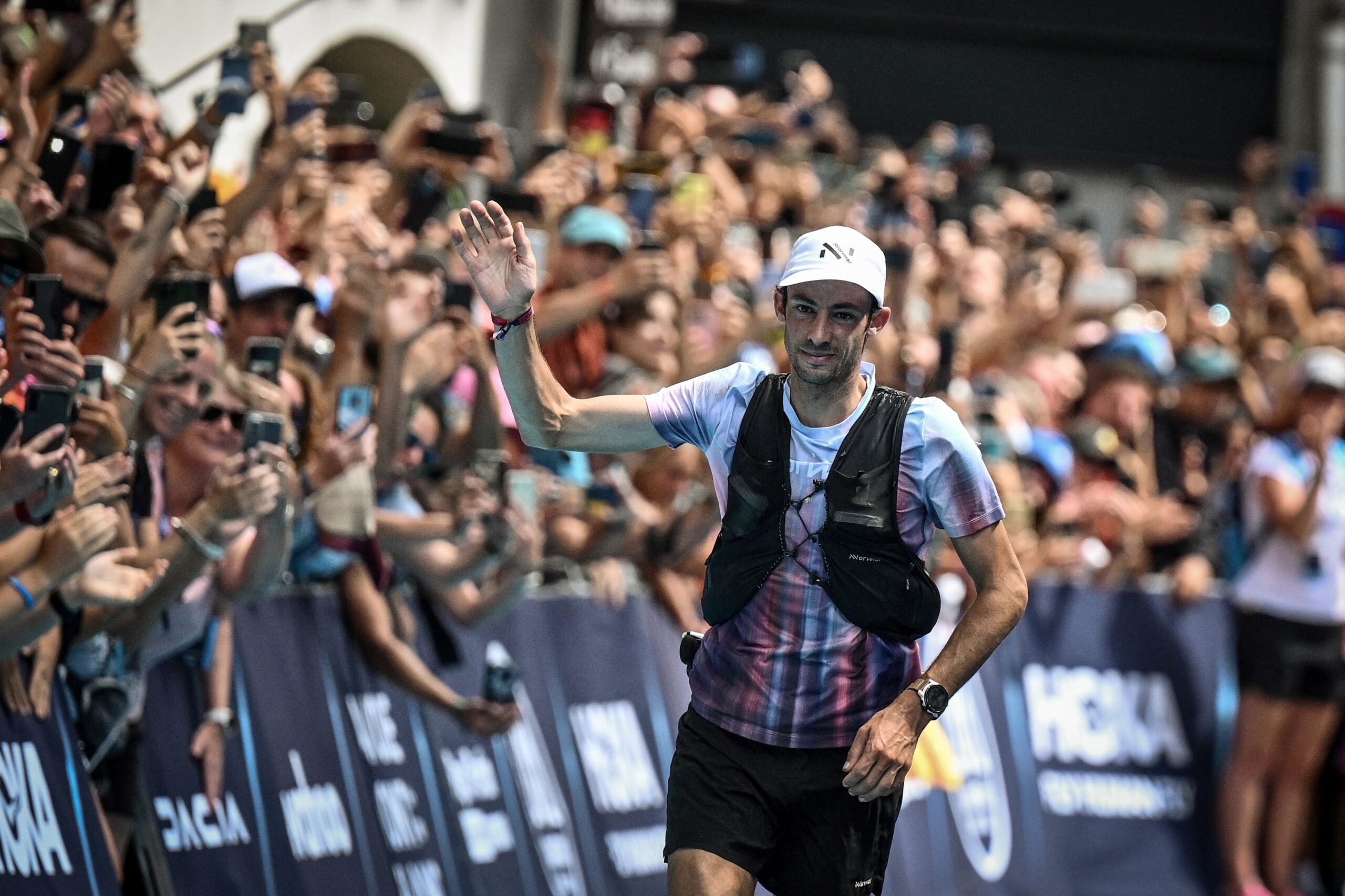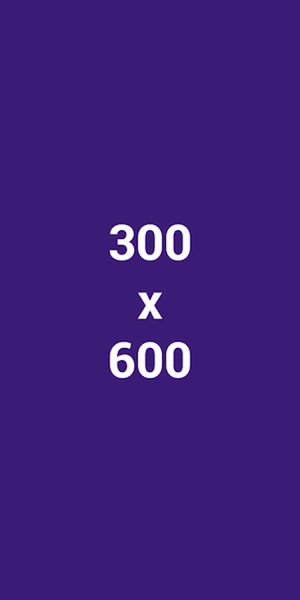“], “filter”: { “nextExceptions”: “img, blockquote, div”, “nextContainsExceptions”: “img, blockquote, a.btn, a.o-button”} }”>
New perk: Easily find new routes and hidden gems, upcoming running events, and more near you. Your weekly Local Running Newsletter has everything you need to lace up!
>”,”name”:”in-content-cta”,”type”:”link”}}”>Subscribe today.
Our Guide to Western States
The History
Elite Entry
The Route
Top Men to Watch
Top Women to Watch
The Rules
How to Watch
Welcome to the most wonderful time of the year in U.S. ultrarunning! On June 28-29, about 370 of the world’s top and luckiest ultrarunners will embark on the historic 100-mile quest from Olympic Valley to Auburn, California, for the 52nd running of the Western States 100-Mile Endurance Run.
You could say the battle has already begun. In the men’s race, the epic showdown shaping up among the likes of four-time champ Jim Walmsley, Kilian Jornet, and Hayden Hawks has blown up well before the starting gun has fired.
But while Walmsley, Hawks, and fellow top-ten returner Jon Rea have withdrawn, Jornet’s training looks more impressive than ever and he’ll be joined by a amalgam of top talent determined to etch their names in the history books, including 2022 champ Adam Peterman, 2024 UTMB breakout victor Vincent Bouillard, 2024 Western States runner-up Rod Farvard, and David Roche, who proved his mettle at fast 100-milers with wins at Leadville and Javelina last year.
Meanwhile, the women’s race will name a new champion among a worthy list of some of the sport’s best, including 2024 runner-up Fu-Zhao Xiang of China, who threw down the third fastest time ever in her debut; third place Eszter Csillag of Hungary; and fourth-place Emily Hawgood of Zimbabwe.
They’ll face stiff competition from the likes of Riley Brady, the non-binary runner from Boulder, Colorado, who’s on a tear with back-to-back Golden Ticket race wins at Javelina and Black Canyon, Tara Dower, who set the overall record on the Appalachian Trail last summer, and Kiwi Caitlin Fielder, who’s bringing formidable foot speed to her 100-mile debut.
And of course, the battle will extend far beyond the competition to the mind-melting heat of the canyons, which comes for everyone. The tenacity of the human spirit, exemplified during the final “golden hour” of the 30-hour race, very well may bring you to tears, even from thousands of miles away.
Western States is, after all, the Super Bowl of ultrarunning. Sure, there are other “important” 100-mile races around the world, but, like the Super Bowl, this is an American event. It’s so much more than that, too. Thanks to a field cap of 369 competitors, it dwarfs in size compared to many European ultras. But for what it lacks in quantity it makes up for in quality. It’s a highly competitive race for elites, a bucket-list race many, and it’s steeped in lore, culture, and sneaky insanity.
Here’s everything you need to know about this year’s Western States 100.
Section divider
The History of Western States
What started as a bet among five friends in 1955 who wanted to prove they could ride their horses 100 miles along the Western States Trail in one day turned into a horse race, the Tevis Cup. In 1974, Tevis Cup veteran Gordy Ainsleigh didn’t have a horse with whom to race, so he ran the race without one. He finished on foot in under 24 hours, and the Western States 100 was officially born three years later.
By 1979, 143 runners attempted the race. (The winner, Mike Catlin, overslept and started 10 minutes late.) That number skyrocketed over the next four decades until it reached its 369 cap, bolstered by the legendary performances of those like Tim Twietmeyer, who won the race five times in the 1990s and ultimately recorded 25 sub-24-hour finishes; Scott Jurek, who won seven consecutive times from 1999 to 2005; and Ann Trason, who won a record-breaking 14 times over the span of 15 years starting in 1989.

Western States transcended into mythological status in 2012 with the release Unbreakable: The Western States 100, a documentary following the iconic 2010 race featuring a showdown among two-time defending champion Hal Koerner; Geoff Roes, who was undefeated at the 100-mile distance; Anton Krupicka, undefeated in his ultrarunning career; and Kilian Jornet, two-time UTMB champion who famously took on Western States in an audacious all-white kit. (If you have not watched this film, please cancel your evening plans.)
What about the women, you may be wondering? May we suggest Billy Yang’s Life in a Day, which follows the 2016 race from the perspectives of returning champion Magdalena Boulet, Devon Yanko, Kaci Lickteig, and Anna Mae Flynn. (Another compelling film was made about the 2001 race, called A Race for the Soul, which can be watched online thanks to PBS KVIE in Sacramento.)
The history, media, lore, point-to-point course, and unique, unpredictable (but almost always unbearably, dare we say dangerously, hot) conditions have conspired into a self-fulfilling prophecy. Now, Western States attracts about 10,000 lottery entrants (all of whom, save a few sponsor spots, need to run a qualifying race) from around the world, as well as a 50-deep elite field that’s disproportionately humongous for a race capped at under 400.
Section divider
Elite Entry
How elites gain entry to the race further magnifies the hype: the top 10 women and men are invited back next year, giving special cachet to a top-10 placement traditionally reserved for a top-three podium spot at most races. In addition, seven Golden Ticket races attract top competitors from around the world for an opportunity to race their way into States for a total of 15 Golden Ticket spots per gender.
Since Western State’s special affiliation with the UTMB World Series began in 2021, the Golden Ticket race offerings have expanded beyond the U.S. This year they included CCC, the 100K at the UTMB Finals in Chamonix, France, and UTMB races in Chianti, Italy, and New Zealand. The result: a growing international field and even an stiffer qualification process for Americans, who may be more constrained to racing on their home turf at the Javelina Jundred and Black Canyons in Arizona, the Black Canyon 100K also in Arizona, and the Canyons by UTMB 100K on much of the same trails as Western States itself.
That disproportionately pointy end of the race contributes to its prestige, as well as its excitement from a spectator perspective. And thanks to the addition of a race livestream for the last couple years, it’s easier to get wrapped up in the States hoopla than ever.
Section divider
The Route
Compared to mountain 100-milers like UTMB Mont Blanc or the Hardrock 100, Western States may not look that impressive on paper. (If the idea of running 100 miles isn’t impressive enough on its own, that is.) But the devil is in the details.
The route follows the Western States Trail from the Palisades Tahoe ski resort in Olympic Valley to Auburn, retracing the footsteps not only of the horsemen of the 20th century, but also the gold and silver miners of the 1850s and the Nisenan, Washoe, and other Indigenous communities that have lived here for millennia. The race is net downhill, but don’t let the elevation profile fool you. States still packs a whopping 18,000 feet of gain. And while the climbing can fry not only the aerobic system, but also yourself on a hot day, it’s the 23,000 feet of descent that can eat your legs up many miles before you reach Auburn.
The race starts in the dark at 5 A.M., in temps sometimes as low as 20 degrees, at the base of Palisades Tahoe in the thin air of 6,000 feet altitude. From the starting gun, runners are in for a rude awakening with a 2,550-foot climb over the first 4.5 miles, where top runners can momentarily soak in the sunrise from the top of Emigrant Pass.
From there, 25 or so miles on singletrack through the high country, the decidedly most technical part of the race that weaves through the majestic California alpine of Granite Chief Wilderness and, on years with harsh winters, considerable amounts of snow. (The course will be snow-free this year.)
The splendor of the high country ends at the Robinson Flat aid station (mile 30.3), and the infamous canyons begin. Here, runners embark on the hottest rollercoaster ride of their lives. On average, temps hover around 88 degrees on race day in Auburn. That translates to about 100 degrees in the dusty convection oven of exposed fire roads and singletrack that weave up and down the steep climbs and descents of the canyons carved by the American River (which runners mercifully will cross numerous times, providing opportunities to cool off). Speaking of cooling off, this section is where heat management becomes critical—especially at the crewed Michigan Bluff (mile 55.7) and Forest Hill (mile 62) aid stations. We’re talking ice vests, ice bandanas, slushies, slurpees, anything and everything to keep your core body temperature as cool as possible.

At Forest Hill, runners can pick up a pacer if they so choose, and traditionally this is where people in the know say the race begins. Recent history suggests, however, that if you’re out for the win these days, the race is already well on its way. Gone are the days where you can make up miles on the lead in the back half of the race. The field has gotten too fast and too deep. From here, it’s 16 miles mostly downhill (although not entirely!) to the iconic Rocky Chucky aid station (mile 78) and the American River crossing just below class 6 rapids, which on low water years sees runners wading in the hip-deep water, and on high water years involves taking a short break from running and hopping in an inflatable row boat, life vests and all. Either way, it’s a prime opportunity to revive in the water once again.
From the river it’s a two-mile climb to the Green Gate aid station (mile 79.8), and voila, you’ve reached the most runnable section of the race! If you have any legs left, that is. It’s rolling singletrack and fire roads until you reach No Hands Bridge (mile 97), where you begin the last kick in the teeth up to Robie Point (mile 99). And then it’s one glorious mile downhill on paved roads until you hit the Placer High School track and the 250 meters of mondo that separate you from the finish line.
Section divider
Top Men to Watch

With four-time winner, course-record holder, and defending champ Jim Walmsley mysteriously disappearing from the start list at the end of May, the men’s race is a whole new game. But the frontrunner to fill his shoes is no slouch. You may have heard of him: Kilian Jornet, just arguably the greatest trail and ultrarunner ever.
In 2011, Jornet proved he has what it takes to win here. But the sport has changed dramatically in the ensuing 14 years. He won the race at age 23 in 15:34:24. That would have placed him 11th in the men’s race last year. And yet, Jornet has also changed, and his training block heading into this race has been highly focused (lots of faster, “flatter” running and heat training) and formidable.
Two more top-10 returners, Hayden Hawks and Jon Rea, also recently were forced to withdraw from the race. But runner-up Rod Farvard returns after giving Walmsley a run for his money last year, along with Kiwi Dan Jones, who threw down a 30-minute course record at the Tarawera 100k in February.
Then there’s Vincent Bouillard, the Hoka shoe engineer who broke out onto the scene last year with his upset victory at UTMB. He earned a Golden Ticket with Jornet at Chianti by UTMB in April. David Roche, who broke the 19-year-old course record at the Leadville 100 in August, earned a Golden Ticket by winning the Javelina Jundred in October. And don’t underestimate Seth Ruhling, who took down Hawks’s course record at Black Canyon; 2022 Western States champ Adam Peterman who’s on the upswing after injury; Caleb Olson, a brand new dad who won Transgrancanaria in April; and Peter Fraňo from Slovakia, who raced his way in with a second-place finish at CCC in August.
Section divider
Top Women to Watch

If the men’s race is a who’s who of ultrarunning, the women’s race will crown a new who. No former champions are toeing the line this year. But eight of the top 10 are coming back, including second place Fu-Zhao Xiang of China who threw down the third fastest time ever in her debut, third place Eszter Csillag of Hungary, and fourth-place Emily Hawgood of Zimbabwe, who lives in Auburn and triumphed at the Canyons 100K Golden Ticket race on April 26.
They’ll be joined by Riley Brady, the non-binary runner from Boulder, Colorado, who’s on a tear with back-to-back Golden Ticket race wins at Javelina and Black Canyon, where they smashed the course record by 30 minutes. Tara Dower, who set the overall record on the Appalachian Trail last summer and just took second well under the previous course record at Black Canyon, seems to be rolling last year’s momentum into something just as special this year.
Also, don’t sleep on China’s Lin Chen, who was flirting with a podium spot at States last year until the skin ripped clean off the bottoms of both feet and she was forced to abandon, ran her way back in at Black Canyon after a short build coming back from an injury. Same goes for Marianne Hogan, the Canadian who’s finished in second and third at UTMB the last two years, as well as third at Western States in 2022. And then there’s New Zealand’s Caitlin Fielder, who successfully translated her “short course” speed to a longer distance at Tarawera. She finished just six minutes behind winner and compatriot Ruth Croft who, no big deal, won Western States in 2022 and took second in her debut at UTMB last summer.
Read our full breakdown of the elite field here.
Section divider
The Rules
Runners must complete the first 62 miles by themselves (with help from their crew at aid stations). At the Michigan Bluff aid station, they can pick up a pacer to egg them on to the finish, although the pacer cannot carry their water, packs, or anything else for them.
Runners have 30 hours to make it from the start at the base of the Palisades Tahoe ski resort to the Placer High track in downtown Auburn to be counted as official finishers. Assuming the first man and woman cross the line in under 24 hours (which, barring a natural disaster they will), their names will be engraved in the Wendell Robie Cup. They will also each take home a hefty bronze cougar trophy.

All runners who finish in under 24 hours earn a hand-crafted silver belt buckle. Runners in the 24:00:01 to 30 hour range receive a hand-crafted bronze belt buckle. Both serve as worthy life-long goals for many competing in the race—some of whom have been entering the lottery with the hopes of having their names selected for over 20 years. The final hour of the race (29:00 to 30:00) is referred to as the “golden hour,” when the last runners fight tooth, nail, and dehydrated body to make it to the finish line in time. There are also age-group awards, and a special prize for the oldest man and woman finishers.
Section divider
How to Watch
You can watch all the action unfold on the Western States 100 Youtube starting at 5 a.m. on Saturday June 28, all the way through the cutoff 30 hours later at 11 a.m. on Sunday, June 29. Given the spotty cell coverage in the high country and the canyons, don’t expect cameras on the runners at all times. (Although the livestream is excellent!) You can also triangulate the coverage by checking the live tracker and X (formerly known as Twitter).
Walmsley’s men’s course record of 14:09:28 from 2019 equates to a 7:09 P.M. PT finish, while Dauwalter’s women’s course record of 15:29:33 is at 8:29 P.M. PT. However, Western States times are heavily weather-dependent, and on a hot day it may take top finishers 20 minutes to an hour or so longer to make it to Auburn.
Be prepared to get nothing else done as you obsessively follow the livestream and leaderboard!














